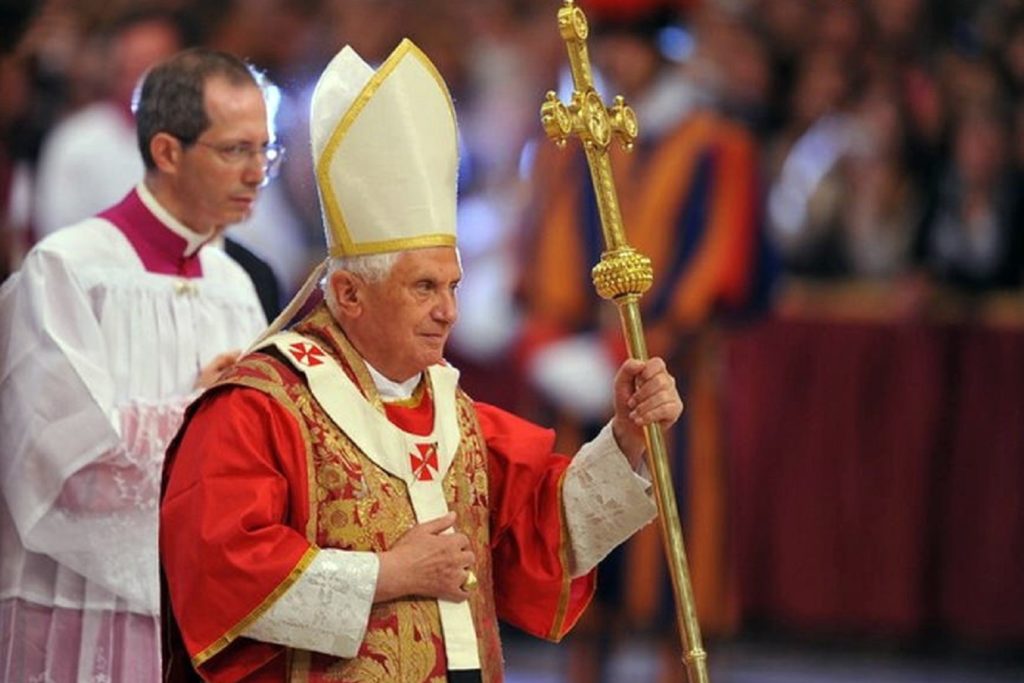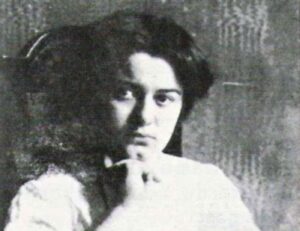It is a dispiriting time to be Catholic. The sexual and financial scandals that have humiliated the Church have seriously compromised its ability to witness to truth. So too has the McCarrick Report’s evidence of widespread mendacity, cowardice, cronyism, and careerism among senior clergy over several decades. Then there is the fact that the words of some western European bishops, particularly German-speakers, indicate that they do not hold the fullness of Catholic faith. And who cannot be dismayed by the extent to which sentimental humanitarianism has become a de facto orthodoxy among many Catholics? Deliberate ambiguity and strongly felt feelings are in; clarity and reasoned faith are out.
In my experience, any conversation about why the Church finds itself in this position invariably gravitates to the topic of the Second Vatican Council. Fifty-six years after its closure, divisions persist concerning Vatican II’s meaning and its place in the controversies that have engulfed Catholicism since 1965.
One figure who played an important role at Vatican II was a young professor, then relatively unknown outside his native Germany. His time at the Council closes the first of a projected two-volume biography of this intellectual who eventually became pope. The book’s author, the German journalist Peter Seewald, has interviewed Joseph Ratzinger extensively since 1997. In Benedict XVI: A Life: Volume One: Youth in Nazi Germany to the Second Vatican Council 1927–1965, Seewald has penned a widely informed account of a man whose thought has shaped debates within the Church—and throughout the West—for decades.
Under the Swastika’s Shadow
Start your day with Public Discourse
Sign up and get our daily essays sent straight to your inbox.Born in 1927, Ratzinger grew up in a Germany which was undergoing rapid political, economic, and cultural change. The habits and traditions associated with past monarchical authoritarianism, Seewald illustrates, clashed with new developments: the growth of mass culture, social emancipation, and the spread of racialist and Marxist ideologies that cloaked themselves in the garb of modern science.
In Benedict XVI: A Life: Volume One, Seewald has penned a widely informed account of a man whose thought has shaped debates within the Church—and throughout the West—for decades.
Ratzinger’s youth was somewhat removed from these troubles. His youth was spent in pious and rural Bavaria, where the Church was omnipresent. In retrospect, Ratzinger described this atmosphere as a “Dreamland,” marked by Baroque architecture, monasteries, processions, Passion plays, and Mozart.
This perhaps romanticized world was gradually pulled into the conflicts that swamped Germany following the 1929 financial crash and the Great Depression. Millions of Germans started to look to radical solutions like National Socialism or Communism for salvation. Following World War II, many such Germans claimed to have always opposed the Nazi regime. In the case of Ratzinger’s family, Seewald provides plenty of evidence that they loathed National Socialism and its leader from the beginning and never wavered in their hostility.
Ratzinger later reflected at length upon the response of German Christians to Nazism, noting how many adapted their beliefs to the new circumstances. Many Protestants embraced “positive Christianity” (a form of “de-Jewified” Christianity) despite opposition from Confessing Church theologians like Martin Niemöller and Dietrich Bonhoeffer.
Among Catholics, the Nazis had a harder time making headway. Seewald points out, however, that although Germany’s Catholic bishops firmly condemned Nazism at first, after 1933 they sought a modus vivendi with the new rulers. This didn’t stop the regime from gradually tightening the screws on independent Catholic activities throughout Germany, or from putting loudly anti-Nazi priests in concentration camps. In these conditions, Ratzinger’s early decision to become a priest could only be interpreted by the authorities as dissent from Nazi ideology.
Ratzinger found a refuge from the madness surrounding him in Catholic liturgy. But he also saw the liturgy as an anticipation of a greater reality. That vision went together with his growing intellectual interest in the claims of religion. “From the beginning,” Ratzinger said, “everything that was said in religion also interested me rationally.”
He wanted to explain the import of faith for living a Christian life in the face of ideologies that constricted rationality. It is a way of thinking that didn’t—and doesn’t—fit contemporary conservative–progressive categories, whether in religion or politics.
Herein we find a pattern that would characterize Ratzinger’s life. He was deeply attached to the Church’s interior and devotional life, yet also determined to use reason to elucidate the truths of Revelation. He wanted to explain the import of faith for living a Christian life in the face of ideologies that constricted rationality. It is a way of thinking that didn’t—and doesn’t—fit contemporary conservative–progressive categories, whether in religion or politics.
Augustine and Physics
The horrors unleashed by Nazism became fully apparent to Ratzinger in the second half of World War II. Conscripted into the Wehrmacht as a teenager, he witnessed deportations of Jews and experienced the effects of saturation bombing upon Germany. Nor could he avoid noting how virtually all the country’s institutions and millions of individual Germans were morally compromised, even if most Germans wouldn’t admit it after 1945.
Remarkably, however, German Catholicism experienced a renaissance after Germany’s surrender, at least as reflected in noticeable upticks in Mass-attendance, conversions, and priestly vocations. Amid this “Catholic spring” the Church acquired considerable political clout via its influence upon Catholic-dominated Christian Democratic governments. Many Germans recognized that, despite its numerous and profound failures, the Church had been not completely suborned by National Socialism, and it had martyrs to prove it.
Yet as a seminarian and young priest, Ratzinger observed something else. Beneath the Church’s apparent institutional strength, Catholic faith was wilting. Twelve years of Nazi rule combined with the material and moral destruction of a savage world war had profoundly corroded religious belief. Ratzinger wasn’t the first to see the widening gap between German Catholicism’s organizational depth and the actual faith life of German Catholics. As early as 1946, the theologian Ida Friederike Görres noticed a silent disillusionment with the Church that bishops, priests, and theologians were failing to address.
This problem was at the forefront of Ratzinger’s mind during his seminary years, his service as a young curate, and his pre-Vatican II theological career. Along the way, three experiences particularly influenced him.
One was his reading of particular Catholic theologians who were under a cloud before Vatican II, including Hans Urs von Balthasar and, especially, Henri de Lubac, S.J. The latter’s 1938 book, Catholicisme, showed Ratzinger a way to think about renewing the Church in modernity through returning to the Scriptures and the Church Fathers.
A second key moment was Ratzinger’s encounter with that most dynamic of thinkers, Augustine of Hippo, and his Confessions. There, Seewald states, Ratzinger discovered “a true biography, a real person active in history [and] . . . aware of his intellectual power. Someone who thought about faith and lived it.” It’s not difficult to see how Ratzinger, like countless other Christians, would be attracted to this vivid and open personality. There was, however, something else that got Ratzinger’s attention: Augustine’s “passionate search for the truth.” What inspired that quest, Ratzinger realized, was faith in Christ. Far from constraining “his intellectual boldness,” Augustine’s desire to “know God and the soul” drove him, Ratzinger later wrote, along “the way of truth, which is a way of courage, humility, [and] constant clarification.”
It was this Christ-Logos who allowed humans to fully comprehend reality, including those post-Enlightenment realities with which Catholics were wrestling.
Ratzinger’s third source of inspiration was more unexpected. Reading widely in the postwar period, he discovered that many natural scientists—those most modern of thinkers—were making their way back to God. Figures like the Munich physicist Aloys Wenzel, the astrophysicist Sir Arthur Eddington, and the Nobel laureate and theoretical physicist Werner Heisenberg were, Ratzinger realized, “suddenly talking about a ‘creator God.’” Ratzinger was struck by Albert Einstein’s insistence that “God does not play dice. Rather, he created the world according to an orderly plan. It is the scientist’s task to discover it.”
All this reinforced Ratzinger’s belief that the God found in the Scriptures was not a Kantian, capital-I Ideal, let alone the Hegelian Geist of capital-H History. Instead, he was the Creator Logos who stands at the beginning of time; who first revealed Himself to the Jewish people, before fully manifesting Himself in the person of Jesus of Nazareth. It was this Christ-Logos who allowed humans to fully comprehend reality, including those post-Enlightenment realities with which Catholics were wrestling. Expounding this outlook, Seewald holds, moved to the center of Ratzinger’s scholarship in the lead-up to Vatican II.
Contested Council
Ratzinger had no reason to assume that he would play a role at the Council which Pope John XXIII announced in 1959. The previous year, however, Ratzinger had captured the interest of German opinion outside academic circles by publishing an article entitled “The New Pagans and the Church.” Its theme concerned the emergence of “a Church of pagans, who still call themselves Christians, but actually have become pagans.”
This problem went beyond the emergence of large numbers of non-practicing Catholics or those who reduced the faith and sacraments to mere markers of cultural identity, rites of passages, networking opportunities, and bourgeois respectability. Many Catholics, Ratzinger argued, were making “a very subjective choice from the creed of the Church in order to shape their own world view.” In other words, the world was driving the content of Christian belief, not the other way around. For Ratzinger, the solution was clear: “In the long run the Church cannot escape having to dismantle bit by bit its semblance of worldliness, to become again what she is: a community of believers.”
At the time, these words identified Ratzinger as a “progressive.” Today they would be viewed as a “conservative” critique of the bureaucratization of Catholic life, exemplified by the contemporary German Catholic church. It has much wealth and many institutions, but very few actual churchgoers, and most of its bishops and theologians seem far more concerned about conforming to secularist expectations than the Gospel.
One bishop whom Ratzinger’s article impressed was Cardinal Josef Frings of Cologne. He subsequently attended one of Ratzinger’s lectures. In it, the theologian condemned both the application of secular political models to Church councils (widely interpreted as a criticism of the Swiss theologian Hans Küng) and intellectuals who despised “the day-to-day faith of simple people,” without which the Church would be “just a chattering, empty frame.” Frings latched onto Ratzinger as a theologian who would give voice to the direction in which he thought the Council should go and not simply rubber-stamp drafts of texts prepared by the Roman Curia.
For Ratzinger, tolerance was the context needed for pursuing the truth, not an all-consuming end in itself.
From that point onwards, Ratzinger became a growing influence on global Catholicism. He drafted, for instance, Frings’s famous 1961 Genoa speech that helped set Vatican II’s agenda. During the Council itself, Ratzinger produced circumspect critiques of Curial texts and worked with de Lubac and others to draft crucial documents like Lumen Gentium (1964) and Dei Verbum (1965). Though Ratzinger’s influence at the Council has long been recognized, Seewald illustrates just how extensive and consistent it was. Ratzinger’s impact, he comments, owed much to his rare ability to combine intellectual clarity with depth, and his unwillingness to be intimidated, whether by rank, bluster, credentials, or demands to “be relevant.”
Two Ratzingers?
Ratzinger’s work was consistent not just in style and method, but also in content. Critics and admirers alike have long argued that his thought substantially changed after Vatican II, but Ratzinger maintains there was no change in his fundamental positions.
Seewald agrees with his subject. He points to Ratzinger’s emphasis on returning to the Scriptures and Church Fathers; on accuracy in the use of words; on using formulations that manifest the interconnections between Scripture, tradition, and magisterial teaching; a firm opposition to utopianism (here Ratzinger was much influenced by reading de Lubac but also the German-American political philosopher Eric Voegelin); a stress upon the Cross’s centrality to grasping reality; and an on-going attention to the idea of communio as a way of understanding the Church. These themes were firmly present, Seewald underscores, in Ratzinger’s pre-1965 way of thinking and acting.
Perhaps most significantly, Seewald demonstrates that Ratzinger resisted any attempt to prioritize concerns for tolerance over searching for and teaching the truth. For Ratzinger, tolerance was the context needed for pursuing the truth, not an all-consuming end in itself. Certainly, Ratzinger argued, the truth needed to be spoken with love. Nevertheless it had to be spoken—especially when the world didn’t want to hear it.
Ratzinger saw that the Church had to live this principle if it was not to become worldly. No doubt, his position also owed something to his awareness of the failure of most of his own people, including Catholics, to confront Nazism’s lies. As I suspect Seewald’s second volume will elucidate, it was a commitment that would propel Ratzinger forward as he confronted various pathologies of reason and faith in not just the world but the Church itself.











